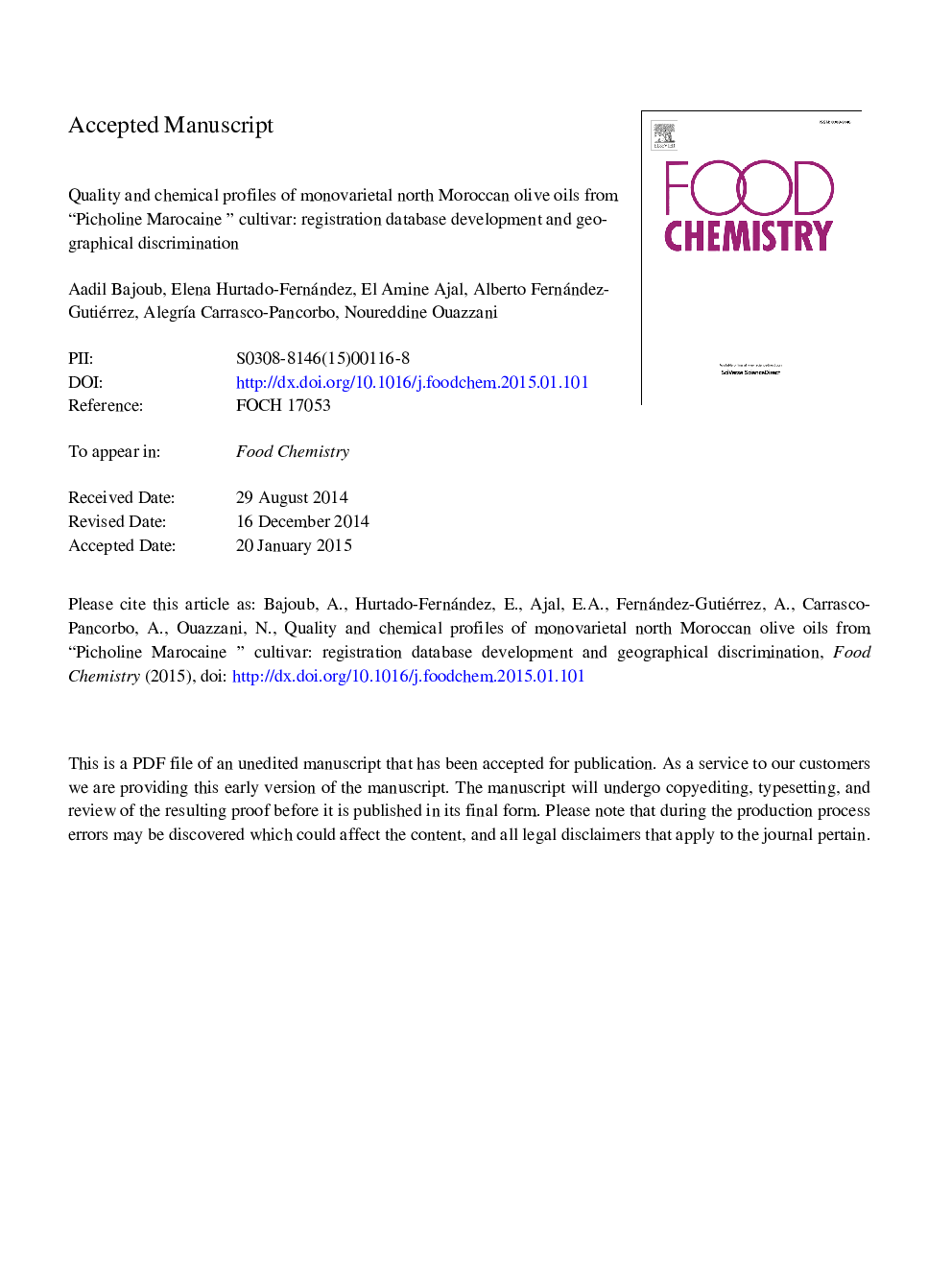| Article ID | Journal | Published Year | Pages | File Type |
|---|---|---|---|---|
| 7592311 | Food Chemistry | 2015 | 33 Pages |
Abstract
Current knowledge of the quality and composition of Moroccan olive oil is still incomplete and no consistent database compiling its properties is available. This study was carried out to achieve a comprehensive characterisation of north Moroccan olive oils. Thus, 279 olive samples of “Picholine Marocaine” cultivar grown in 7 Moroccan regions were collected, and oils extracted over two consecutive crop seasons (2011 and 2012) and analysed (considering physicochemical quality parameters and purity criteria). Results indicated that all the studied samples showed values fulfilling the established limits set by the International Olive Council (IOC) standards, with the exception of 32 samples that had a linolenic acid content higher than 1%, which is the maximum value fixed by the IOC regulation. Furthermore, the usefulness of the evaluated parameters for tracing the geographical origin of the studied samples was tested by using canonical discriminant analysis. A good rate of correct classification and prediction was achieved.
Keywords
Related Topics
Physical Sciences and Engineering
Chemistry
Analytical Chemistry
Authors
Aadil Bajoub, Elena Hurtado-Fernández, El Amine Ajal, Alberto Fernández-Gutiérrez, AlegrÃa Carrasco-Pancorbo, Noureddine Ouazzani,
